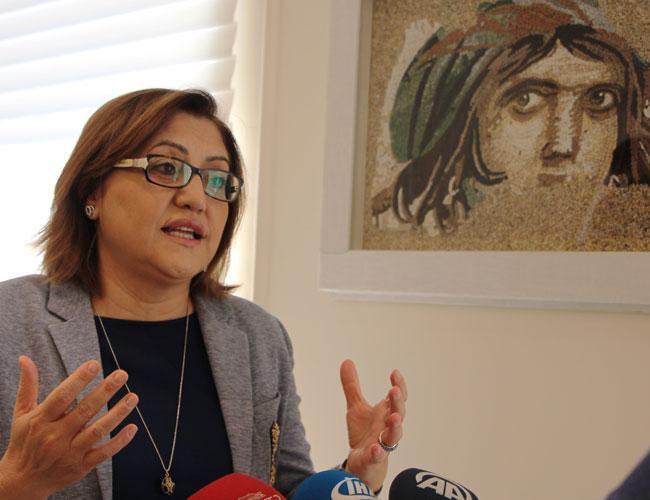
Twelve ancient Zeugma mosaic pieces looted during illegal excavations in Turkey’s southeastern province of Gaziantep nearly 50 years ago will be returned to the country from the U.S. at the end this month, Gaziantep Mayor Fatma Şahin has told daily Hürriyet.
Şahin said she will personally travel to the U.S. and pick up the 12 pieces forming part of the framing periphery of the famous “Gypsy Girl” mosaic, which is now a symbol of the ancient city of Zeugma and Gaziantep.
The 12 pieces are currently being displayed at the Bowling Green State University (BGSU) in Ohio. The BGSU purchased the pieces for $35,000 in 1965 from antiquities dealer Peter Marks at the Peter Marks Works of Art, a now-shuttered New York gallery. The pieces were eventually restored and installed under thick protective glass in the floor of the Wolfe Center for the Arts at the university, which opened in 2012.
In May, the BGSU signed an agreement with the Turkish culture and tourism ministry at the time to return the ancient pieces. BGSU President Rodney Rogers, during the signing ceremony, said they took it as a legal and ethical duty to return the tile fragments to Turkey.
Since then, Turkish authorities have been in continuous contact with the BGSU for the relevant returning procedures to take place.
But it was when a Turkish delegation accompanying Turkish President Recep Tayyip Erdoğan, including Şahin, was in New York last month for the 73rd General Assembly of the United Nations that the relevant procedures accelerated at full speed. Turkish Culture Minister Mehmet Nuri Ersoy gave Cultural Attaché Sedat Gönüllüoğlu at the Turkish Tourism and Cultural Office in Washington authority for the initiation of the mosaic pieces’ transportation to Turkey.
Şahin spoke of the progress regarding the return of the relevant mosaic pieces to daily Hürriyet before leaving New York. “Our museum’s symbol, our Mona Lisa, gets dropped as it was being smuggled in the 1960s [during illegal excavations in the ruins of Zeugma]. The fallen part stays where it got dropped, and all the other pieces of the mosaic comes to the U.S. and are sold by the relic smugglers. Once we found out about this, we started to immediately work on what we can do,” she said.
“This is a four-year-long work. We have worked with four of our ministers. Our president has given an order as soon as he heard the situation, saying, ‘Whatever is necessary, let it be completed in a fast way, let us succeed in this.’ … We have undertaken a serious work with diplomacy,” she said.
“At the end of October, we are going to Ohio to pick up the artifacts. The ‘Gypsy Girl’ will be joining her family. Since they are relics, the pieces need to be insured and need to be brought that way. Turkish Airlines will be its sponsor,” Şahin has added.
Meanwhile, the BGSU will receive high-quality replicas of the ancient pieces from the Gaziantep Metropolitan Municipality once the relevant transportation process is concluded, Şahin has said.
The “Gypsy Girl” mosaic is considered to be the most important artifact of the Zeugma Mosaic Museum in Gaziantep – the world’s biggest mosaic museum which opened in 2011.
The museum covers an area of 30,000 square meters and includes three different buildings, which have five seminar and conference rooms, administrative units, a library and exhibition fields. According to officials, the first question visitors ask is about the Gypsy Girl mosaic.
The mosaic is displayed in a special section on the museum’s second floor.
